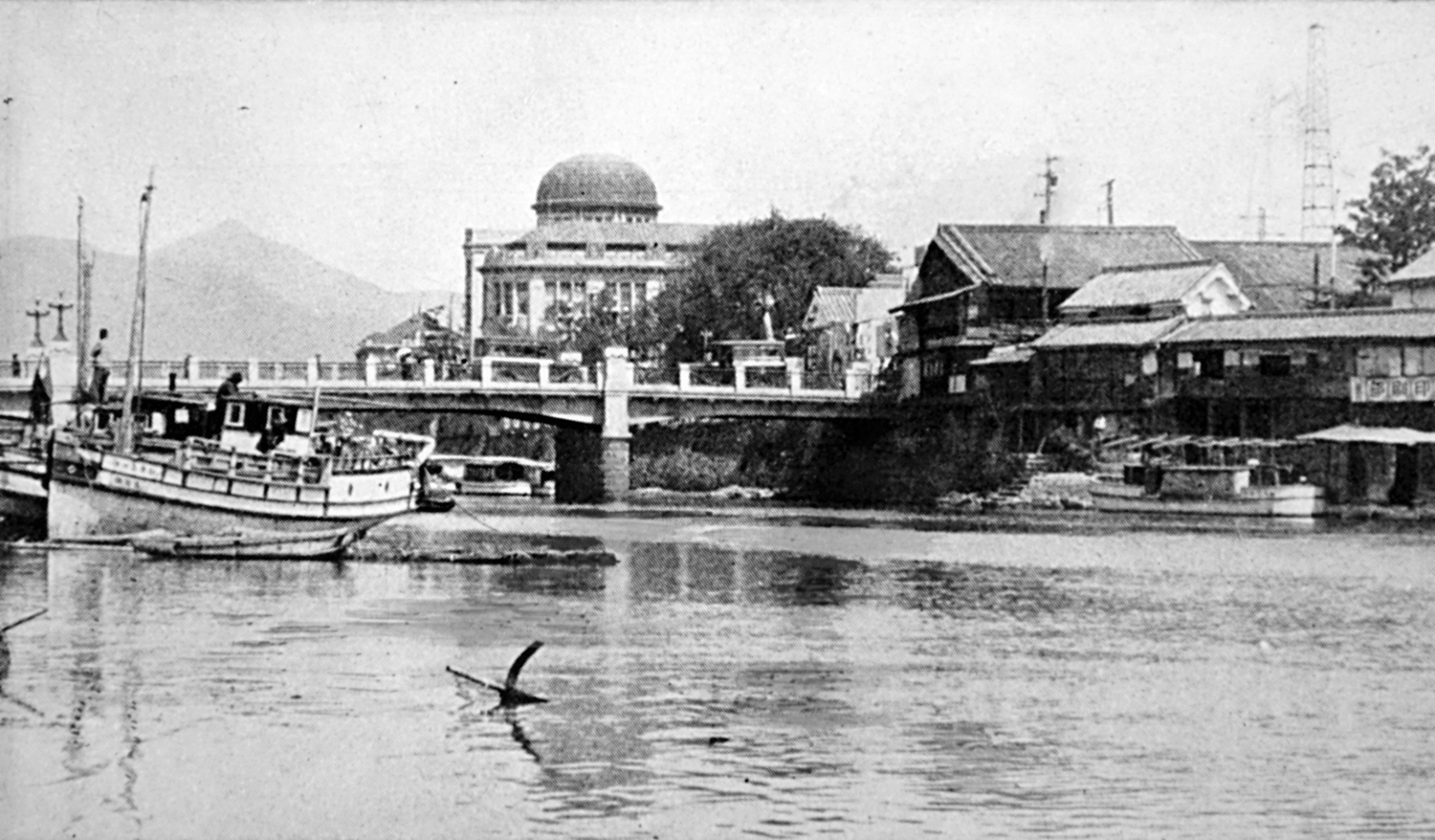
Hiroshima before the bombing. Courtesy of the U.S. National Archives.
Mokusatsu: The Deadliest Mistake
Hiroshima Before

Hiroshima before the bombing. Courtesy of the U.S. National Archives.
Why Hiroshima?
Hiroshima was the chosen target for the dropping of the first atomic bomb, Little Boy. Hiroshima had a sizeable population, was geographically large, had some military installments, and was largely unaffected by wartime bombings. Visual bombing was used to assess the extent of destruction.
Hiroshima After
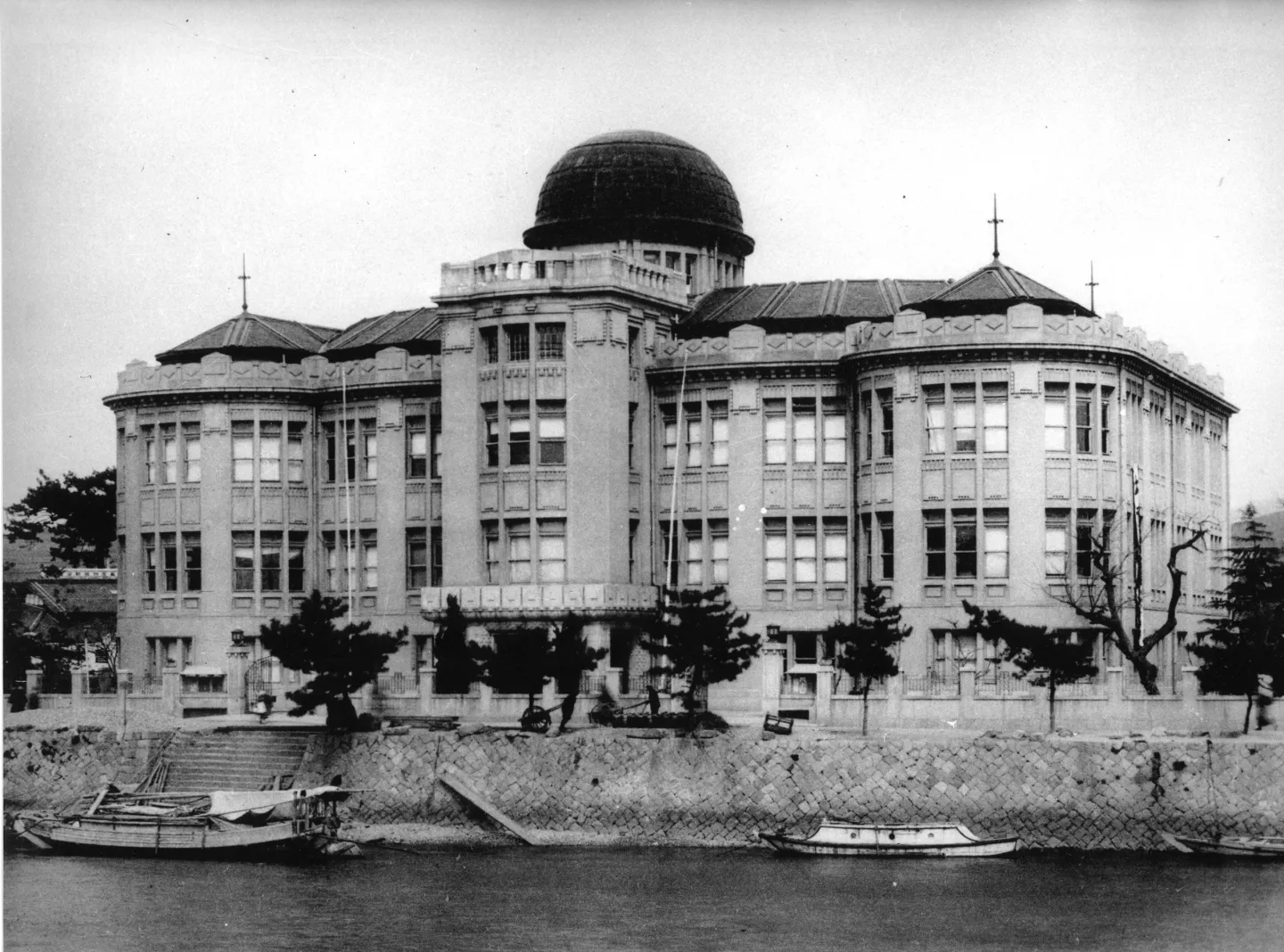
Hiroshima Prefectural Commercial Exhibition Hall, circa 1930's. Courtesy of the Hiroshima Peace Memorial Museum.
Because the atomic bomb exploded directly on top of the dome, it maintained most of its distinct features from the downward blast and was nicknamed the "A-Bomb Dome".
Due to the bombing, only the Hiroshima Prefectural Commercial Exhibition Hall's supporting beams remain today, which are being preserved as the Hiroshima Peace Memorial.
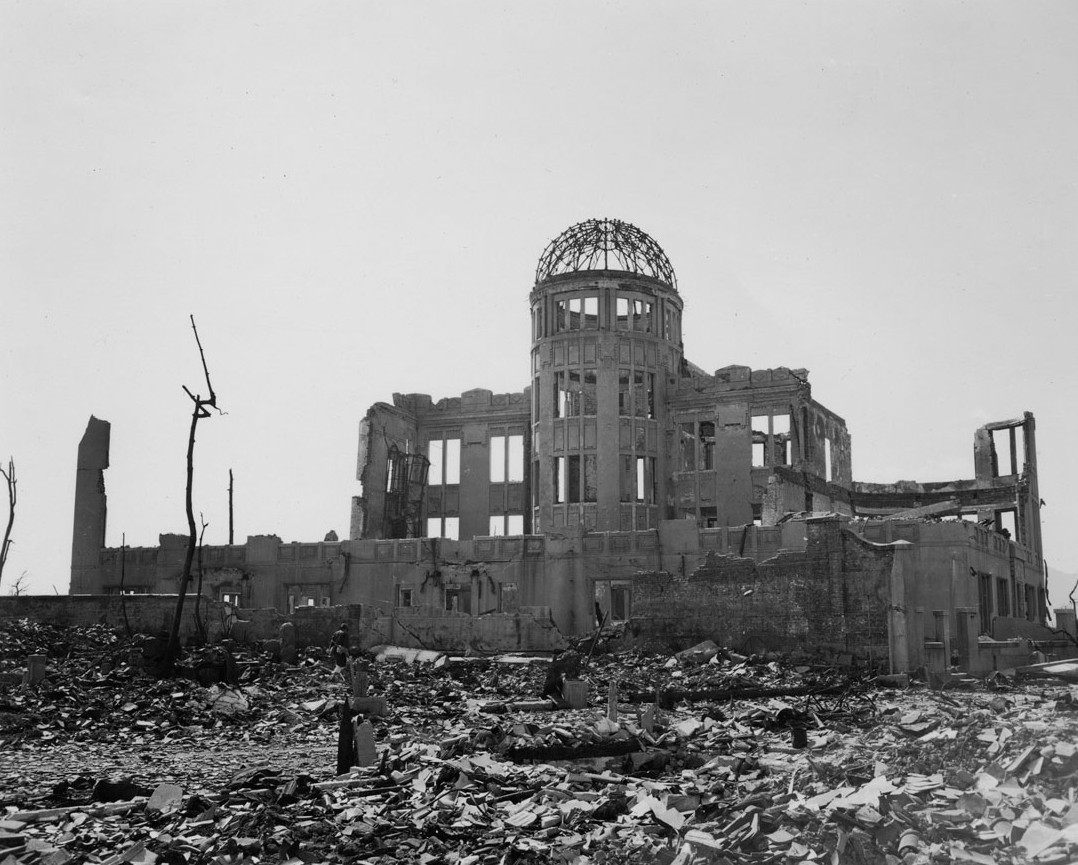
The building was constructed in 1915 as Hiroshima Prefectural Commercial Exhibition Hall. The atomic bombing killed everyone in the building. Courtesy of the U.S. National Archives.
The intense heat of the atomic bomb disintegrated people on the spot. When the heat energy reached an object, the energy was absorbed leaving shadows from the environment right before the bombing.
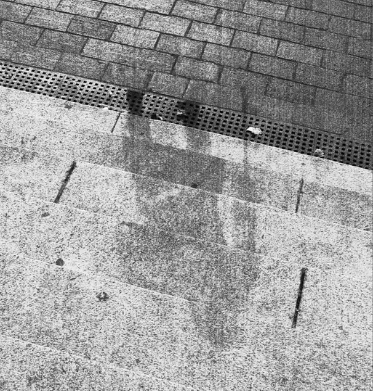
A person's shadow on bank steps in Hiroshima, Japan, which was created during the 1945 nuclear blast. Courtesy of the Universal History Archive/Universal Images Group.
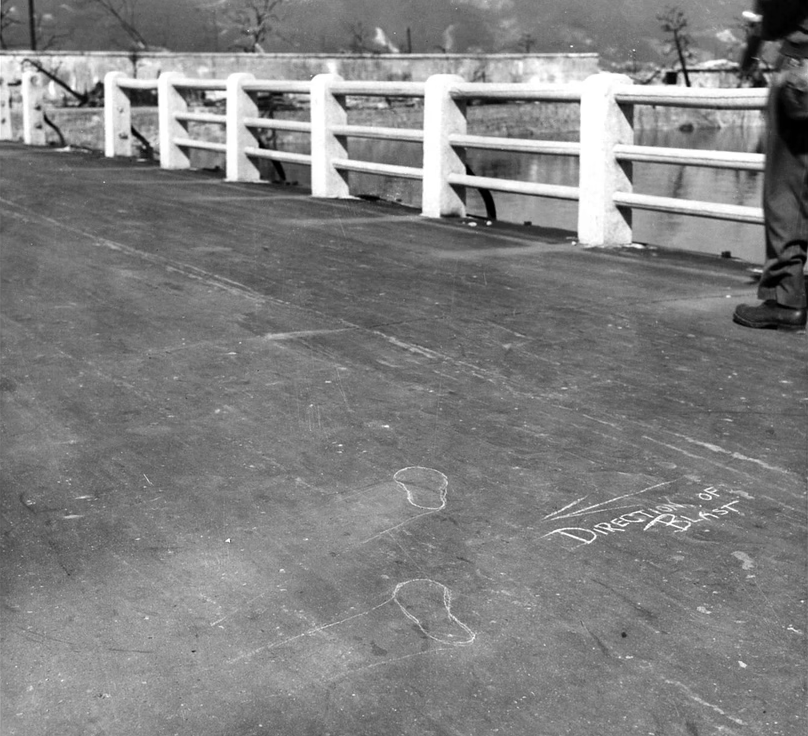
“Direction of blast” chalk marks and outlines of the feet of a victim caught in the explosion. The intense heat of the initial flash of the detonation seared every nearby surface, leaving inverted “shadows.” Courtesy of the U.S. National Archives.
Hiroshima was home to approximately 250,000 people early-1945. The nuclear bombing demolished 70 percent of buildings and resulted in over 100,000 casualties in the immediate destruction. Thousands of people were buried in debris and survivors faced horrible burns and slow painful deaths. Effects are still being felt today with many survivors developing leukemia, cancer or other side effects from radiation poisoning.
Atomic Diplomacy
From the disasters at Hiroshima, a new form of diplomacy was birthed under the invisible threat of nuclear warfare. As a result, the Atomic Energy Act of 1946 was signed to forward the "utilization of atomic energy for peaceful purposes to the maximum extent". This hegemony that was showcased by the U.S. solidified their status as a global superpower.
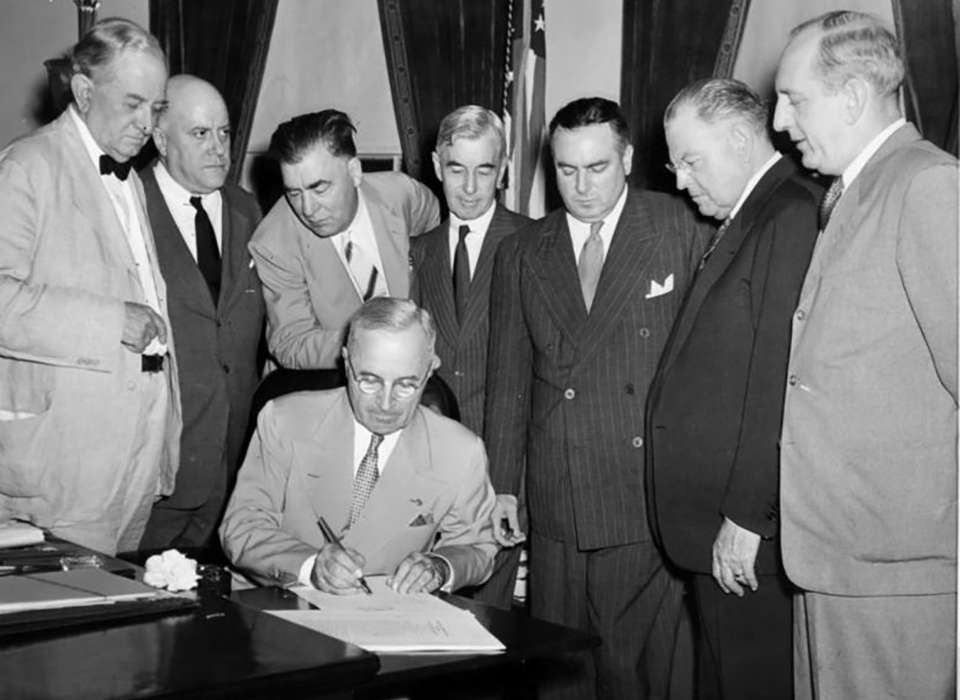
President Harry S. Truman signs the Atomic Energy Act of 1946. Courtesy of the Department of Energy Office of History and Heritage.
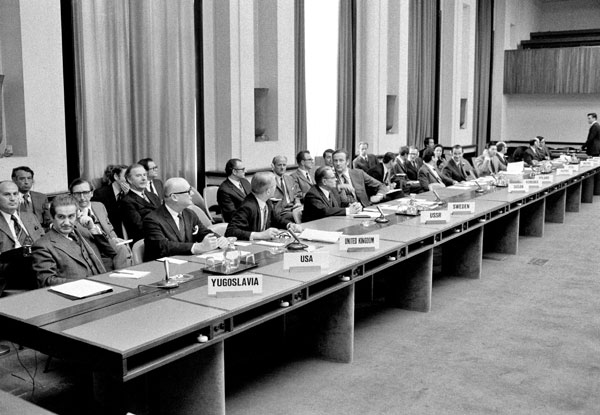
April 1, 1974 - First meeting for the Review Conference of the Parties to the NPT, United Nations, Geneva, Switzerland. Courtesy of UN Photo.
Proliferation
The use of the first atomic bombs would also shape the global perception on the importance of meticulous communication as stakes for nuclear warfare increased, leading to numerous efforts such as the Treaty on the Non-Proliferation of Nuclear Weapons (NPT) signed in 1970.